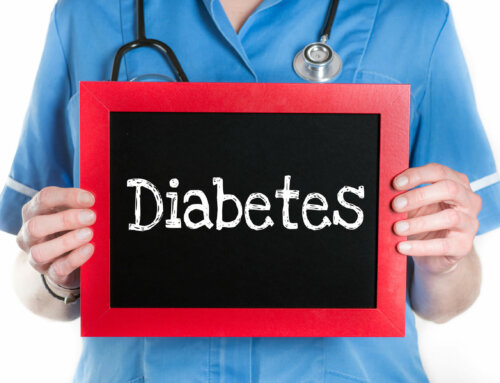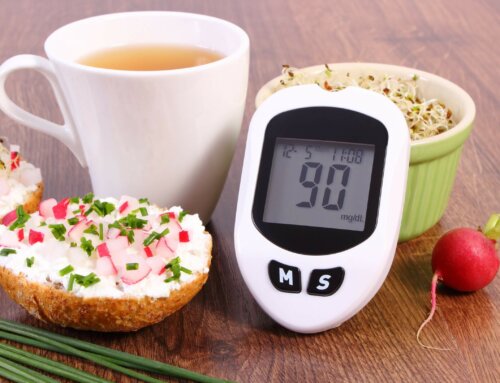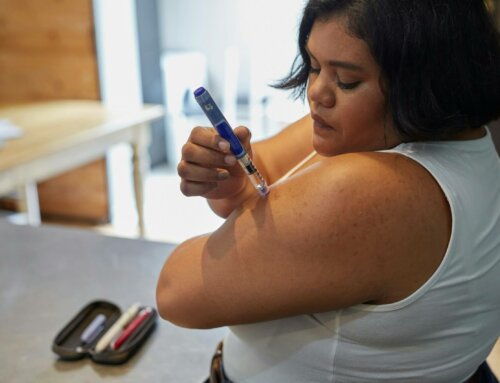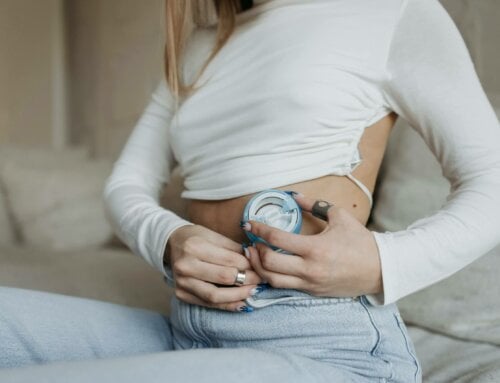At ADW Diabetes we are always encouraging you to ask questions and get answers to your diabetes questions. New information is constantly available in this field and more knowledge means more blood sugar control. Stay up to date on studies done in medicine, especially in diabetes, to increase your knowledge for self-care.
1. Tell me more about salt. Should I use regular salt for cooking and flavoring my food or should I use a salt substitute when I have diabetes? Which is safer?
Answer:
May is National High Blood Pressure Education Month and hypertension is very common when you have type 2 diabetes. It is widely known that “excessive sodium intake is associated with cardiovascular disease and mortality.” A high daily intake of sodium may cause heart attack, stroke and heart failure.
“Too much salt causes fluid build-up in the blood vessels forcing the heart to work harder and pump more blood through the body. This raises blood pressure in the process.” Salt is a mineral. Many people find the taste of salt extremely satisfying and are totally unwilling to cut down the amount they consume. Sodium chloride or NACL is also known as salt. Salt has some important features.
Salt helps with:
- Absorbs and transports nutrients
- Maintains blood pressure
- Maintains fluid balance
- Transmits nerve signals
- Contracts and relaxes muscles
Salt can be used as a seasoning, to preserve foods, as a food color enhancer or to create a brine. Even unprocessed foods like fresh veggies, legumes and fruits contain salt. 75-90% of salt is already added to our foods, even without you using the salt shaker. Salt is also used at the table after cooking to enhance food flavors.
Big salt offenders include bottled salad dressings, pasta sauces, taco mixes, cured meats like ham, hot dogs, sausage and bacon, certain cheeses, seasoned pasta mixes, flavored rice mixes, canned soups, boxed stuffing and potato mixes, as well as condiments such as ketchup, mustard, soy sauce, fast and fast food.
The highest sodium content in foods are found in are processed and bagged, baked, packaged goods, packaged cereals, snack foods as well as deli meats and frozen dinners. Even mineral and sparkling water can be high in sodium. The guideline used to allow for “2300mg of salt daily.” Since we have gained more knowledge about how salt can negatively affect us, the new guidelines suggest “you limit sodium between just 2000-2300mg a day.”
According to the American Heart Association, “heart patients and patients with diabetes should try to stick to daily salt intake of 1500mg of or below which is less than a teaspoon.” The average American currently eats at least 3400mg of salt or more a day which is over a tablespoon. Remember that fancy salts which may sound more exotic, like Pink Himalayan Sea salt, Black Lava salt, Birch Smoked salt, infused sea salts, Hawaiian Sea salt, Arctic Sea salt and Habanero salt affect the body in the same manner as table salt.
A new study done at Bond University in Australia finds that “using salt substitutes can result in a lower incidence of cardiovascular disease” which is a huge benefit if you have diabetes. The study was recently published in the Annals of Internal Medicine.
What are salt substitutes?
Salt substitutes are a mixture containing lower amounts of sodium and increased levels of potassium. These products may also be known as “Lite Salt.” Most people do not get enough potassium in their diet. The daily recommended intake for potassium is 4700mg a day. Many find that salt substitutes taste slightly bitter or more metallic than regular salt.
“Potassium is a mineral which relaxes the walls of the arteries and lowers blood pressure.” It helps to keep our electrical cardiac system regulated and assists with heart muscle contraction and relaxation. Overuse of salt substitutes “can be dangerous to certain specific populations”.
With kidney disease, especially end-stage renal disease, patients can’t properly excrete potassium from their bodies. Also, if you have uncontrolled diabetes, liver disease or take ACE (inhibitors/potassium-sparing diuretics), you can retain too much potassium. This can result in “hyperkalemia” or high potassium.
High levels of potassium can lead to heart arrythmias, muscle weakness, paralysis or sudden heart failure. In type 1 diabetes, there can also be shifts in potassium levels. Always check with your physician before starting a salt substitute. With normal kidney function, it is difficult to get too much potassium, especially through foods.
Which foods are high in potassium?
- Dried fruits
- Nuts
- Avocados
- Spinach
- Potatoes
- Tomatoes
- Bananas
- Oranges
- Beets
- Carrots
- Squash
- Red meats
There are some completely sodium-free salt substitutes such as Morton’s salt substitute. “Morton’s salt substitute is a sodium-free product designed for people on a doctor-recommended sodium restricted diet.” It is made only of potassium chloride instead of sodium chloride.
Potassium chloride activates different taste buds than sodium chloride. There is also Morton’s Lite salt which is 50% less sodium than regular table salt. It is blended with potassium chloride.
Here are some spices and herbs that can be used to enhance food flavor without using salt or a salt substitute:
- Dill
- Sage
- Cilantro
- Tarragon
- Citrus juices: lemon, lime or orange
- Red wine vinegar, apple cider vinegar, champagne or balsamic vinegar
- Black pepper, red pepper flakes, chili peppers, cayenne pepper
- Garlic powder/onion powder
- Fresh grated garlic
- Saffron
- Cinnamon
- Truffle oil
- Poppy seeds
- Nutmeg
- Allspice
- Lemongrass
- White pepper
- Rosemary
- Thyme
- Paprika
- Ginger
- Cloves
- Cumin
- Cooking wine/cooking sherry
- Coriander
- Celery seed
- Herbs de Provence
- Mrs. Dash salt-free flavorings
What are some low-sodium snacks to eat when you have diabetes?
- Unsalted nuts: pecans, pistachios or walnuts
- Low sodium string cheese
- Hard-boiled egg
- Seeds: unsalted pumpkin, sunflower, sesame, flaxseeds
- Sardines
- Greek plain yogurt and berries
- Avocado
- Berries
- Unsalted popcorn
- Homemade Chia pudding
- Roasted chick peas
- Unsalted Edamame
- Hummus and veggies
What can I do for the best outcomes?
Make small changes over time. Try different salt substitute brands which may taste more pleasant to you. Prepare your food from scratch so you know what is going into it. The USFDA works with the food industry to reduce sodium in foods. Learn to read labels. A food with 140mg of sodium or less is considered low sodium.
Also learn about the % Daily Value or %DV. This value can help you determine if a food is high or low in sodium. 5% DV or less is considered low in sodium and 20% or higher is considered high. Rinse foods that contain salt. Get creative with your food and flavoring.
Always stick to fresh fruits and veggies, lean meats, fatty fish, low fat dairy, healthy fats. Eat less sodium, less preservatives and less sugar. Drink calorie-free beverages.
2. Are there foods, drinks and OTC medications which can have an impact on your nighttime sleep patterns? I’ve been hearing “quality sleep” is so important for diabetes control.
Answer:
According to sleep specialists, “what and when you eat and drink can have an effect on your sleep.” Up to 35% of Americans suffer from insomnia. Good sleep boosts your immune system, keeps your brain healthy and reduces problems with chronic diseases, especially diabetes and heart disease.
Besides being concerned about your nighttime blood sugars (if you have diabetes), your food choices and timing of food are also influential in your sleep patterns. Sleep is complex and many factors play into how you sleep. Chronic lack of sleep can affect your blood sugars in a negative way. Certain foods and drinks make it harder to fall asleep and stay asleep.
Here are some examples:
Caffeine. Too much caffeine can make you anxious, jittery and prevent you from sleeping. Each person handles caffeine in a different way. Too little sleep can raise your risk of developing type 2 diabetes and if you have it, it can make your blood sugar numbers vary.
Caffeine “might affect the way your body uses insulin.” Other studies suggest that caffeine may reduce the risk of developing diabetes. “Having coffee on an empty stomach may raise insulin resistance and eventually your blood sugars.” Drink coffee while you are eating food. Research is mixed when it comes to diabetes and caffeine and more targeted studies are needed.
Usually, 400mg of caffeine a day is considered safe. Each cup of coffee is about 120-200mg of caffeine. This is generally no secret that caffeine can keep you more awake and energized since it is a central nervous system stimulant.
As a stimulant, it encourages the release of cortisol and adrenalin which raises blood sugars. A stimulant will keep you awake. It is best to eliminate caffeine between 12:00-2:00PM depending on your personal caffeine tolerance. Avoid caffeine for at least 6 hours before going to bed.
Caffeine is found in:
- Coffee: including decaf coffee but in smaller amounts
- Tea: especially black and green tea
- Regular and Diet soft drinks
- Chocolate: especially dark chocolate
- Cola nut: any product that contains the “Cola nut” as a flavoring ingredient
- Guarana
- Energy drinks: even those that are sugar-free
- Tiramisu
- Espresso
- Yerba Mate: a traditional South American tea with worldwide popularity
- Energy bars: read the labels for caffeine and extra sugar
- Hot cocoa: both regular and sugar-free
- Cocoa puffs cereal
- Special K cereal with chocolate bits
- Trail mix with chocolate chips
OTC pain medications with caffeine may affect your sleep. Some OTC pain meds combine “aspirin and acetaminophen” which can increase pain relief capabilities. These pain relievers are used for cold symptoms, headaches, backaches, tooth aches, migraines, osteoarthritis, muscle aches and pain and sinusitis. Check with your physician before taking a pain reliever with caffeine especially when you have diabetes.
Examples of these pain relievers include:
- Doan’s Extra Strength backache relief
- Excedrin Extra Strength
- Excedrin Migraine relief
- Paracetamol
- Acetaminophen
- Fiorcet/Fiorinal
- Vivarin
- Lucidex
- Flextra
- Anacin
- BC Original or BC fast pain relief arthritis
Spicy foods. Eating spicy foods can keep you awake because it increases the incidence of heart burn, bloating, GERD, indigestion or acid reflux. Spicy foods can also increase your body’s core and surface temperature. Elevated temperature can negatively affect your sleep patterns. Specific foods to avoid before bedtime include: chili, spicy Chinese mustard, hot sauce, hot salsa, curry dishes and both cayenne peppers and chili peppers which contain capsaicin.
Foods with Tyramine. Tomatoes, red wine, eggplant and soy sauce contain tyramine. Fermented foods like aged Cheddar, Brie cheese, Blue cheese, Gouda, sour cream and yogurt all contain Tyramine. Tyramine stimulates the release of norepinephrine, a brain stimulant that prevents you from falling asleep.
Raw veggies. You would think raw veggies would be a good bedtime snack but ultimately, they are not. They are difficult to digest and put your digestion into overdrive. You feel bloated and uncomfortable.
Foods with added sugars. “Studies have shown that eating foods with added sugar and refined carbs were associated with higher odds of insomnia.” These foods are especially poor choices when you have diabetes. Other recent studies have shown that “refined carbs and added sugars cause poor sleep quality.” These foods make your body release cortisol and adrenalin which cause hunger, make you feel more wound up, more anxious and irritable. Added sugars create GI imbalances lowering the good gut bacteria which can affect your quality of sleep.
Sugary cereals. Loaded with sugar, one of the poorest evening snacks especially when you have diabetes is eating sugary boxed or bagged cereals.
Flavored yogurts.
Pastries, cookies, candy, doughnuts, ice cream, sherbet and other sweet desserts.
Sweetened drinks: Sweet iced tea, fruit drinks, fruit juice, regular soda, energy drinks.
Alcohol. Drinking alcohol may cause sleep disruptions, suppress breathing and make sleep apnea worse. Many people with diabetes have sleep apnea. Drinking alcohol makes you snore more intensely. “Alcohol disrupts the release of melatonin in your brain.” Alcohol interrupts the natural sleep cycle and lowers REM (rapid eye movement) sleep cycles causing more tossing and turning. Alcohol is a muscle relaxer which can further obstruct and block your airway. It is a diuretic which will make you urinate more during the night keeping you awake. Drinking alcohol starts out as a sedative which makes you sleepy but then becomes a stimulant and wakes you up during the middle of the night. It makes your sleeping fragmented. It mostly affects the second half of the night. As the levels of alcohol drop, you get a “rebound arousal.” Alcohol can dehydrate you and make your heart pound. Alcohol can play havoc with your blood sugars sending them both up and down. If you do drink alcohol, try to only drink just 1 drink for women and 2 for men maximum per day, and at least 4 hours before bedtime. Stay well hydrated with plain water.
Fatty foods & fried foods. All these foods tax the digestive system and digestive process. The digestive process “slows up by 50% when you sleep.” French fries, chips, fried Mozzarella cheese sticks, and processed meat can all alter your circadian rhythm and can contribute to poor sleep patterns. These foods not only affect your ability to fall asleep but to also stay asleep. They sit in your stomach for hours and make you feel sluggish in the morning. Avoid super cheesy foods, full fat ice cream, foods with butter or cream, steaks and large portions of heavy and fatty protein. Lean protein in small amounts is good for you even in the evening. This also includes fast foods like burgers, fries, pepperoni pizza or fried chicken wings.
Drinking too much water. There is a limit to how much water you should drink 3-4 hours before bed. Even plain water will stimulate your urge to urinate and keep you from getting a decent night of sleep. Extremely watery foods will also have the same affect and should be avoided before sleep including: watermelon, cantaloupe, oranges, peaches, pineapple, blueberries, tomatoes, iceberg lettuce, zucchini, celery and cucumbers.
Acidic foods. Although these foods don’t really have an impact on your blood sugars, they may trigger gastric reflux and make restful nighttime sleep impossible to achieve. Foods such as citrus, onions, pickles, garlic, leeks, scallions, dark chocolate, tomato or spaghetti sauce and peppermint may increase poor sleep quality.
Here are some foods that are getting more attention to help you sleep better with or without diabetes.
- Milk. Milk is usually associated with childhood and feeling nurtured. It also contains tryptophan which converts to melatonin and serotonin which both may aid in sleep. Milk contains certain peptides which relieve stress and enhance sleep. A small glass of milk(warmed) with a spoonful of nut butter on a whole grain cracker would be a good bedtime snack. Stick to low fat or 2% milk. A few spoons of low-fat cottage cheese or plain Greek yogurt is also a good food choice in the evening.
- Tart cherries. Tart cherries contain antioxidants and melatonin which helps sleep. You can find them in the freezer section of your store. Tart cherry juice is popular too, but do not exceed 2 ounces per serving since it is a fruit juice and considered sweet.
- Kiwi. Kiwi fruit contains melatonin, zinc, magnesium and a high concentration of serotonin which can assist with improved sleep.
- Fatty fish. Salmon, tuna, trout, mackerel, sardines and herring contain vitamin D and Omega-3s which help regulate serotonin and sleep.
- Chamomile tea. Chamomile tea is an herbal tea that contains flavones which are antioxidants. It was used in ancient times to benefit health and increasing calmness. It has a mild taste and contains no caffeine. Chamomile tea contains apigenin which promotes sleepiness and helps prevent insomnia. It contains a chemical compound called chamazulene which works as an analgesic. “it may help balance blood sugars as shown in some studies.”
The best overall advice is to plan your evening meal at least 3-4 hours prior to bedtime. Even better, think about having your main meal in the afternoon and a light dinner in the evening. Remember, restorative sleep is excellent for improved diabetes control and reduced risk of heart disease. Try to do it the most natural way you can but do consult your doctor if you have made changes and are not getting any positive sleep results. There are some sleep medications they may prescribe.
3. What is a GLP-1 again? Are there foods that increase GLP-1 or do I have to take a medication?
Answer:
GLP-1s or glucagon-like peptide 1 receptor agonists are a “class of medications used in the treatment of type 2 diabetes as well as for obesity.” These medications have gained popularity over the last few years. GLP-1s are also especially helpful in people with diabetes who have “atherosclerosis, heart failure or chronic kidney disease.” 1/3 of people with diabetes have kidney disease and about “32% of people with diabetes, globally, also have heart disease.”
How do they work?
GLP-1s work by increasing insulin secretion from the pancreas, delay gastric or stomach emptying and making you feel full longer. They also stop the production of glucagon made in your liver (another source of sugar) and promotes weight loss better than any other diabetes medication. GLP-1s also assist in glucose or sugar uptake in the muscles. They are given by injection once a week.
Do they have side-effects?
Each person tolerates medication differently, but the most common side-effects of GLP-1 include: nausea, vomiting and diarrhea. Dizziness, headaches and fast heart rate have also occurred. There is a low risk of hypoglycemia or low blood sugars with these medications.
What are the names again?
The best-known options are Trulicity, Byetta, Victoza, and Ozempic. Wegovy and Zepbound are used for obesity. There are now generic varieties. You should not take these medications if you “have a personal or family history of medullary thyroid cancer.”
Do we make our own GLP-1?
Yes, it is a hormone made in your gut that helps regulate blood sugars and promotes fullness. When you eat food “your gut releases the GLP-1 hormone within 15-30 minutes. GLP -1 induces fullness in the central nervous system.” Most foods allow for the release of GLP-1, but some do more than others. Processed foods and modern-day diets are “stripped of dietary fiber” which makes it difficult to secrete GLP-1 from your gut.
How can you naturally increase GLP-1s?
Certain foods can trigger the release of GLP-1. You can eat more fiber, lean protein, healthy fats and water rich fruits and vegetables. Some small studies suggest certain supplements like berberine, curcumin, green tea, cinnamon, soybean and ginseng which “may boost GLP-1.” Always consult your health care professional before starting a new supplement. Since legumes are high in fiber, they soak up water which makes them very filling. A legume is “any plant that bears its fruit inside a pod. Legumes include: lentils, peas, chickpeas, peanuts, and all beans.
Some excellent food choices that mimic the effect of GLP-1s are:
- Lentil curries
- Bean stews
- Bean tacos
- Minestrone soup
- Apples
- Oats, barley, whole wheat (soluble fiber)
- Sprouts, broccoli, cauliflower, carrots and Brussel sprouts
- Cottage cheese and plain Greek yogurt
- Eggs. Egg whites are particularly beneficial for the release of GLP1s from your gut
- Fish and foods high in Omega-3 fatty acids
- Nuts. Especially peanuts, almonds and pistachios
- Avocados
- Olive oil
These choices will promote weight loss when eaten in proper amounts, boost metabolism, enhance glucose tolerance and assist in regulating blood sugars.
Information which can better your health is available almost daily. Keep healthy and keep learning!
References:
- https://www.sleepfoundation.org/nutrition/food-and-drink-promote-good-nights-sleep
- https://www.mortonsalt.com/home-product/morton-salt-substitute/
- https://www.fda.gov/media/84261/download
- https://www.medicalnewstoday.com/articles/swapping-table-salt-salt-substitutes-may-lower-risk-dying-early
- https://www.health.harvard.edu/heart-health/can-a-salt-substitute-cause-high-potassium-levels
- https://www.uhhospitals.org/blog/articles/2023/06/salt-substitutes-a-healthy-alternative-to-the-real-thing
- https://www.healthline.com/nutrition/foods-that-keep-you-awake
- https://www.webmd.com/vitamins/ai/ingredientmono-935/guarana
- https://www.webmd.com/diet/ss/slideshow-how-much-caffeine
- https://www.unilab.com.ph/health-tips/why-some-painkillers-like-paracetamol-contain-caffeine
- https://www.drugs.com/ingredient/caffeine.html
- https://www.medicalnewstoday.com/articles/foods-that-keep-you-awake
- https://www.piedmont.org/living-real-change/can-your-diet-affect-your-sleep
- https://www.nytimes.com/2022/01/25/well/mind/alcohol-drinking-sleep.html
- https://www.medicinenet.com/diet_nutrition_healthiest_salty_snacks/article.htm
- https://www.ncbi.nlm.nih.gov/books/NBK551568/
- https://www.goodrx.com/conditions/weight-loss/how-to-increase-glp-1-naturally
- https://www.healthline.com/health/foods-that-increase-glp-1
- https://therecipecritic.com/bean-stew/
- https://newsnetwork.mayoclinic.org/discussion/3-15-ready-mayo-clinic-minute-are-you-using-a-salt-substitute/







Leave A Comment